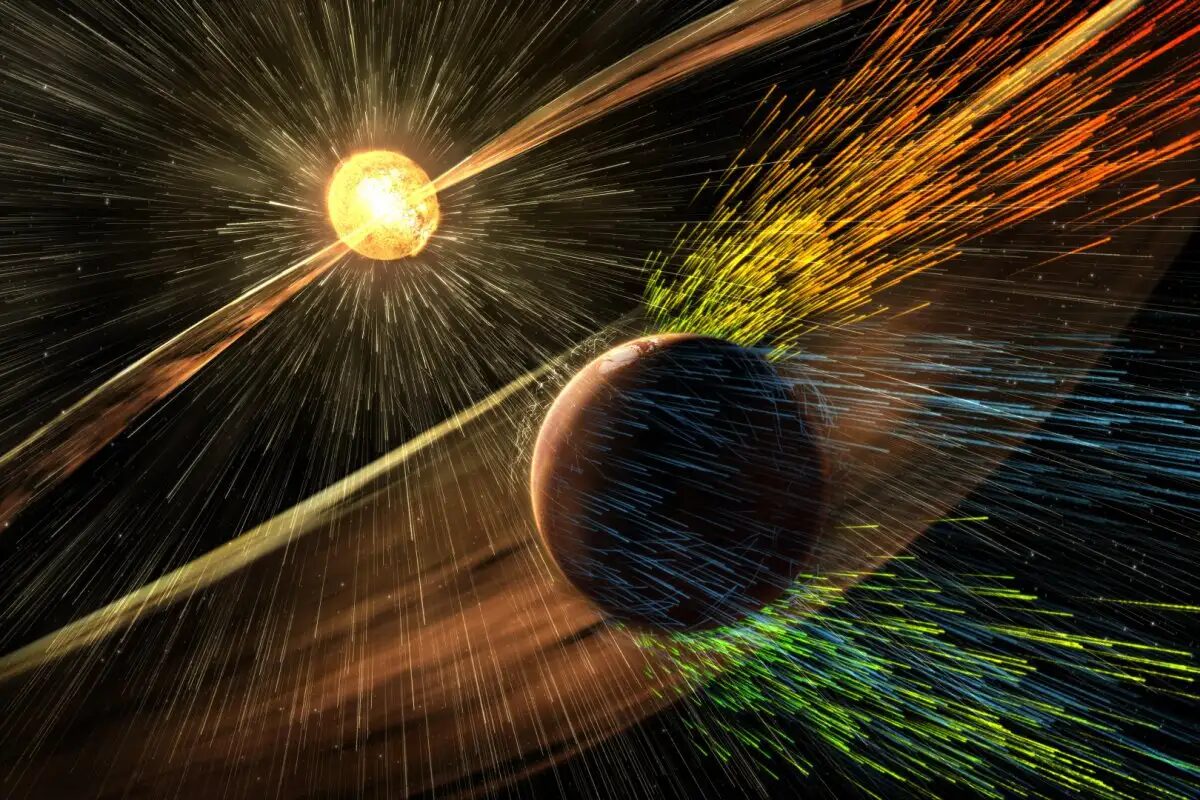
They're likely way off the mark.
Today German Prof. Stefan Homburg tweeted a summary of warming that's happening at other places within our solar system, suggesting the sun is behind it.
"Global warming isn't only happening on earth," he tweets.
Triton has warmed 3°K
For example, warming is happening on Triton, Neptune's moon. According to Germany's wissenschaft.de: "Neptune's giant moon Triton is the first body in the solar system where global warming could be detected."
According to measurements, the atmospheric pressure doubled and the temperature rose 3 degrees Kelvin. "The cause is probably higher solar irradiation of the nitrogen ice cap at Triton's south pole."
Mars warmed 0.65°K since 1970s
German online news weekly Stern also reported in 2007: "The average temperature on Mars has risen by about 0.65 degrees Celsius since the 1970s," citing American astronomers. Blamed here, though, are Martian dust storms. Why would dust storms on Mars be getting stronger? It's likely linked to increased solar activity.
The Moon 3°C warmer, due to man!
Newly analyzed temperature data show the surface temperature of the moon raised by about three degrees Celsius, reported Germany's Business Insider here in 2018. But NASA blames the astronauts! "By walking around and poking at the lunar surface."
"Climate change" on Pluto
According to www.wissenschaft.de here, Pluto's atmosphere has warmed to being 40°K warmer than the temperature at the surface (-220°C). The reason for this temperature gradient is the "absorption of sunlight [by methane] reflected from Pluto's surface into the atmosphere."
Methane makes up only half a percent of Pluto's atmosphere. This small fraction heats the atmosphere in sunlight.
But not only Triton, Pluto and Mars are warming in our solar system, as Prof. Homburg suggests, other planets are warming as well. And there's only one common denominator: The Sun. Global warming scientists do all they can to ignore this rampaging elephant in the room.
Jupiter's "planetary heat wave"
Scientists last year found "an unexpected 'heat wave' of 700 degrees Celsius, extending 130,000 kilometers in Jupiter's atmosphere."
What's behind it? Jupiter experiences variable intensity auroras around its poles as an effect of the solar wind.
Saturn heating
The surface of Saturn has been "slowly heating up" as well, reports Popular Science here. But NASA blames Saturn's rings for the recent phenomenon.
"According to the paper, the most feasible explanation is that icy ring particles raining down onto Saturn's atmosphere cause this heating. writes Popular Science. "A few things could be driving this shower of particles, including the impact of micrometeorites, bombardments with particles from solar wind, solar ultraviolet radiation, or electromagnetic forces picking up electrically charged dust. Additionally, Saturn's gravitational field is pulling particles into the planet while this is all occurring.
Note how it's never the sun's solar activity and variability. It's always some mysterious explanation.
Yet, there's a reason why it's called the "solar" system. It's because the sun is at its center, and so its solar storms and variability impact all the bodies in it.



Reader Comments
Not actually at the centre...
take a look: [Link]
“When scientific knowledge and applied technology reach a critical level of advancement, without being informed by spiritual truths and guided by moral authority, the planetary civilization will relinquish its destiny to continue as it is.”
~ Cosmic Convergence Research Group [Link]